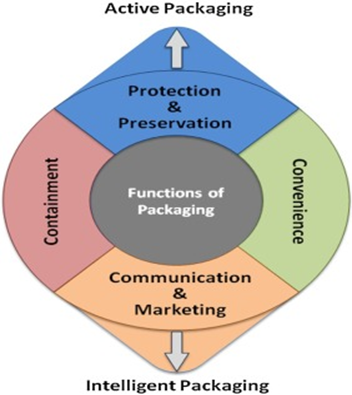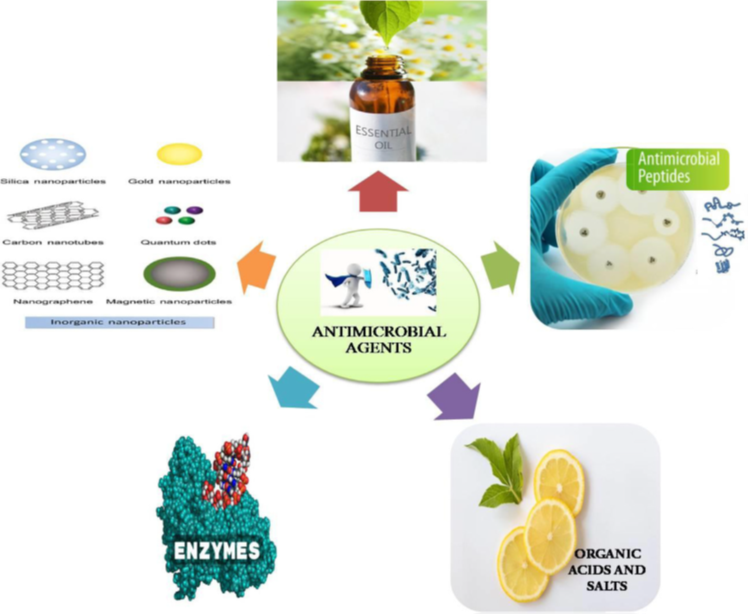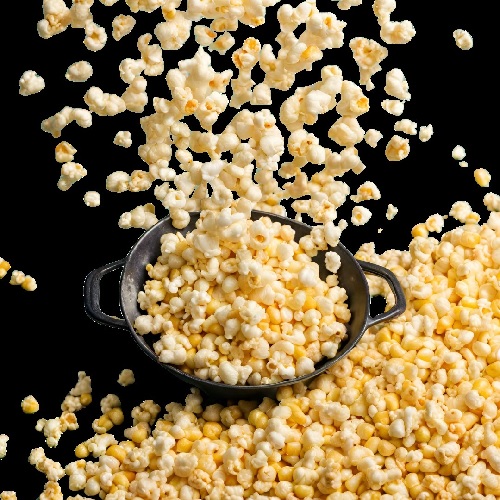Min Min Aunga,b*, Hiroshi Uyamac, Marwah Rayunga, Lu Lu Taung Maia, H’ng Paik San a,e Ainun Zuriyatia, Ezyana Kamal Bahrine
aHigher Education Centre of Excellence (HiCoE), Institute of Tropical Forestry and Forest Products, University Putra Malaysia, 43400 UPM Serdang, Selangor, Malaysia.
bChemistry Division, Centre of Foundation Studies for Agricultural Science, University Putra Malaysia, 43400 UPM Serdang, Selangor, Malaysia
cDepartment of Applied Chemistry, Graduate School of Engineering, Osaka University, Suita 565-0871, Japan
dDepartment of Forestry and Environment, Faculty of Forestry, Universiti Putra Malaysia, 43400 UPM Serdang, Selangor, Malaysia
e Department of Bioprocess Technology, Faculty of Biotechnology and Biomolecular Sciences
*Corresponding Author:minmin_aung@upm.edu.my
Introduction
Food packaging are used to wrap and protect food against physical, chemical, and thermal problems. Along with containers and packaging, nondurable products are affectionately referred to as disposable plates, hinged containers, and other foodservice containers. Food packaging has been used in various goods, and packaging plays a significant role in food safety throughout the supply chain. Food packaging is essential in managing the severe issue of sustainable food consumption (Tyagi et al., 2021). Several of these packaging methods interact with and react to the food-packaging environment, allowing certain chemicals to be released into or scavenged from the packing headspace, thus extending the shelf life of food items (Alamri et al., 2021) , the packaging business's degradation of food items due to spoilage and pathogenic microbes is a significant issue. Active and intelligent packaging is utilised to address all of these issues and preserve the packaged food's organic characteristics Figure 1.

Fig. 1. Packaging functions including its advanced packaging systems, active and intelligent packaging: adapted from (Youssef & El-Sayed, 2018)
(Al-Tayyar et al., 2020) stated that it is widely recognised that the primary function of packaging is to isolate products from their external environment and to protect food from stagnation caused by the actions of mechanical forces, odours, dust, gases, moisture, and microorganisms, as well as from radiation/light exposure and insect infestation. During any step of its exposure to the external environment, such as retail display and storage and transportation and distribution, food may get contaminated with bacteria or other pathogens. The consequence is that proper packing should act as a barrier, limiting the flow of contaminants from food sources in the surrounding environment. While at the same time, packaging should be impenetrable to germs, non-toxic, and non-polluting to the surrounding environment. More than just protecting food goods and prolonging their shelf life, the packaging is critical for standardising, marketing, and delivering useful information to customers while improving the convenience and usability of the food products available on shop shelves.
Food packaging is often divided into edible packaging and non-edible packaging. In the case of edible food packaging, it is applied directly to the surface of the meal by dipping or spraying it in a liquid condition, resulting in the formation of a micro-layer coating on the food's surface because of the process. When it comes to food packaging on the surface, higher temperatures cause food to degrade and bacteria to proliferate more quickly. Preparing fresh vegetables and deli meats ahead of time may help extend the shelf life of perishable products such as jam, condiments, salad dressings, and deli meats that are low in sugar and salt.
Food packaging should include antimicrobial characteristics to prevent spoilage. Not only is food preserved for a more extended period, but it may also be kept indefinitely. In research from Chawla et al. (2021), antimicrobial packaging is an excellent options strategy for reducing, restricting, or inhibiting the growth of spoilage and pathogenic microorganisms in food products. Moreover, the packaging industry has attracted significant attention for its beneficial impact on food quality safety and shelf-life extension.
Food paper packaging
Paper packaging material is the primary option for packaging material as worldwide market standards for environmental protection of packaging material grow. Paper has ecological benefits in renewability, recyclability, and composability. Still, more importantly, in terms of long-term viability, it offers sustainability in its "natural" look and feels far more than material alternatives such as plastics. (Poole, 2018). Paper package benefits include a diverse range of raw materials, low prices, and various species that are easy to mass manufacture. Second, it has excellent printing capabilities, making it a perfect choice for composite processing. Third, there are hygienic and safety concerns. Fourth, trash may be recycled, beneficial for the environment(Advantages, 2018). Paper packaging's drawbacks include its porous structure and the hydrophilic nature of cellulose fibres, as well as the fact that paper/paperboard has fundamentally weak barrier characteristics. (i.e., Low water and grease resistance, high gas and water vapor permeability ) (Nechita & Iana-Roman, 2020)
Because these qualities directly impact the integrity and quality of packaging, there is still a need to find a solution to enhance mechanical properties, moisture and gas barrier capabilities, grease resistance, and water absorption capacity. Food safety is primarily dependent on the barrier properties of the packing material, which can be improved in various ways. Water vapour barrier and water resistance characteristics can be enhanced by changing the wettability of a paper surface using sizing agents or hydrophobic coating materials (Shankar & Rhim, 2018). Polysaccharides and other polymer composite additions to paper packaging also can be improved in mechanical strength and barrier properties.
Customers and merchants are expecting longer shelf-lives and more excellent protection from various hazards (notably microbial spoilage); thus, the food sector's difficulties in preserving products have grown increasingly complicated(Rodríguez et al., 2007). Furthermore, biodegradable paper-based food packaging has emerged as a viable option for ensuring sustainability, although its vulnerability restricts it to ambient dampness, leading to an increase in microbial activity. As a result, adding functional elements like antimicrobials and antioxidants to the coating materials might increase their value (Zulfiana et al., 2020).
Antimicrobial Packaging
Antimicrobial packaging is described as a packaging system that interacts with the food product or the surrounding headspace to kill or inhibit the growth of microorganisms in the food product (Surwade & Chand, 2017). It can provide slow, continuous migration of the antimicrobial agent from the packaging material to the food or the package headspace, ensuring that a sufficient antimicrobial agent concentration is maintained the product's shelf life(Quintavalla & Vicini, 2002).
Antimicrobial food packaging aims to ensure food safety, shelf-life extension, and quality preservation while also preventing spoilage. Besides, adding an antimicrobial agent to paper makes it suitable for use as a food packaging material, as the presence of these bacteria in food can cause significant illnesses, particularly in children. For example, B. cereus causes severe nausea, vomiting, and diarrhoea and is responsible for a small percentage of foodborne infections (2–5%). Bacillus foodborne diseases are caused by the survival of bacterial endospores in undercooked food. Some B. cereus spores can tolerate cooking temperatures of less than or equal to 100°C (212°F). When food is incorrectly chilled, the endospores might germinate, exacerbating the disease(El-Samahy et al., 2017).
Different microorganisms, such as molds, yeasts, bacteria, and others, degrade and deteriorate foodstuffs, lowering their quality and shelf life. Antimicrobial agents can be used to suppress the majority of this microorganism. These antimicrobials can be used alone or in conjunction with one another(Mertin, 2009).

Fig. 2. Commonly used antimicrobial agents in food packaging applications(Chawla et al., 2021).
Chemical and natural agents are the most used antimicrobial agents in food packaging applications (Figure 2). Inorganic nanoparticles or microparticles (silver, titanium dioxide (TiO2), zinc oxide (ZnO), copper and gold nanoparticles, Nano clay, and carbon nanotubes) have widely been used as antimicrobial agents due to their high thermal stability, longevity, and broad spectrum of antifungal and antibacterial activities. Propionic acid, benzoic acids, sorbic acid, lactic acid, acetic acid, and their salts have potent antibacterial properties and can be used as antimicrobial agents in packing materials.
Enzymes obtained from animals’ sources (e.g., lysozyme, lactoferrin) and naturally occurring polymers (chitosan) are a class of natural antimicrobial agents that have been found used in food as effective preservatives. Bacteriocins (nisin, natamycin, lactic acid bacteria) are antimicrobial chemicals generated by lactic acid bacteria, among other bacteria. They predominantly inhibit gram-positive pathogens.(Khaneghah et al., 2018; Lucera et al., 2012)Antimicrobial components in plant materials are commonly found in herbs and spices (rosemary, sage, basil, oregano, thyme, cardamom, and clove), fruits and vegetables (guava, pepper, cabbage, garlic, onion, citrus), seeds and leaves (grape seeds, fennel, nutmeg, parsley, and olive leaves). Besides the antimicrobial activity, they offer antioxidant activity and other medicinal effects(Arshad & Batool, 2017).
References
Advantages, T. (2018). The Advantages And Disadvantages Of The Paper Packaging 1835 ().
Al-Tayyar, N. A., Youssef, A. M., & Al-hindi, R. (2020). Antimicrobial food packaging based on sustainable Bio-based materials for reducing foodborne Pathogens: A review. Food Chemistry, 310(December 2019).
Alamri, M. S., Qasem, A. A. A., Mohamed, A. A., Hussain, S., Ibraheem, M. A., Shamlan, G., Alqah, H. A., & Qasha, A. S. (2021). Food packaging ’ s materials : A food safety perspective. Saudi Journal of Biological Sciences, 28, 4490–4499.
Arshad, M. S., & Batool, S. A. (2017). Natural Antimicrobials, their Sources and Food Safety. Intech.
Chawla, R., Sivakumar, S., & Kaur, H. (2021). Antimicrobial edible films in food packaging: Current scenario and recent nanotechnological advancements- a review. Carbohydrate Polymer Technologies and Applications, 2(December 2020), 100024. https://doi.org/10.1016/j.carpta.2020.100024
El-Samahy, M. A., Mohamed, S. A. A., Abdel Rehim, M. H., & Mohram, M. E. (2017). Synthesis of hybrid paper sheets with enhanced air barrier and antimicrobial properties for food packaging. Carbohydrate Polymers, 168, 212–219.
Khaneghah, A. M., Mohammad, S., Hashemi, B., Es, I., Fracassetti, D., & Limbo, S. (2018). Efficacy of Antimicrobial Agents for Food Contact Applications : Biological Activity , Incorporation into Packaging , and Assessment Methods : A Review. Journal of Food Protection, 81(7), 1142–1156.
Lucera, A., Costa, C., Conte, A., & Del Nobile, M. A. (2012). Food applications of natural antimicrobial compounds. Frontiers in Microbiology, 3(AUG), 1–13.
Mertin, U. (2009). PREPARATION OF CONTROLLED RELEASE ANTIMICROBIAL FOOD PACKAGING MATERIALS. In Engineering and Science of Izmir Institute of Technologyy.
Nechita, P., & Iana-Roman, M. R. (2020). Review on polysaccharides used in coatings for food packaging papers. Coatings, 10(6), 1–24.
Poole, J. (2018). Paper-based packaging: Environmental benefits and “natural” aesthetics drive growth. https://www.packaginginsights.com/news/paper-based-packaging-environmental-benefits-and-natural-aesthetics-drive-growth.html
Quintavalla, S., & Vicini, L. (2002). Antimicrobial food packaging in meat industry. Meat Science, 62, 373–380.
Rodríguez, A., Batlle, R., & Nerín, C. (2007). The use of natural essential oils as antimicrobial solutions in paper packaging. Part II. Progress in Organic Coatings, 60(1), 33–38.
Shankar, S., & Rhim, J. W. (2018). Antimicrobial wrapping paper coated with a ternary blend of carbohydrates (alginate, carboxymethyl cellulose, carrageenan) and grapefruit seed extract. Carbohydrate Polymers, 196(May), 92–101.
Surwade, S. A., & Chand, K. (2017). Antimicrobial food packaging : An overview. European Journal of Biotechnology and Bioscience, 5(5), 85–90.
Tyagi, P., Salem, K. S., Hubbe, M. A., & Pal, L. (2021). Advances in barrier coatings and film technologies for achieving sustainable packaging of food products – A review. Trends in Food Science and Technology, 115(December 2020), 461–485. https://doi.org/10.1016/j.tifs.2021.06.036
Youssef, A. M., & El-Sayed, S. M. (2018). Bionanocomposites materials for food packaging applications: Concepts and future outlook. Carbohydrate Polymers, 193(February), 19–27. https://doi.org/10.1016/j.carbpol.2018.03.088
Zulfiana, D., Karimah, A., Anita, S. H., Masruchin, N., Wijaya, K., Suryanegara, L., Fatriasari, W., & Fudholi, A. (2020). Antimicrobial Imperata cylindrica paper coated with anionic nanocellulose crosslinked with cationic ions. International Journal of Biological Macromolecules, 164, 892–901.
Tarikh Input: 04/02/2022 | Kemaskini: 04/02/2022 | hasniah
PERKONGSIAN MEDIA




























